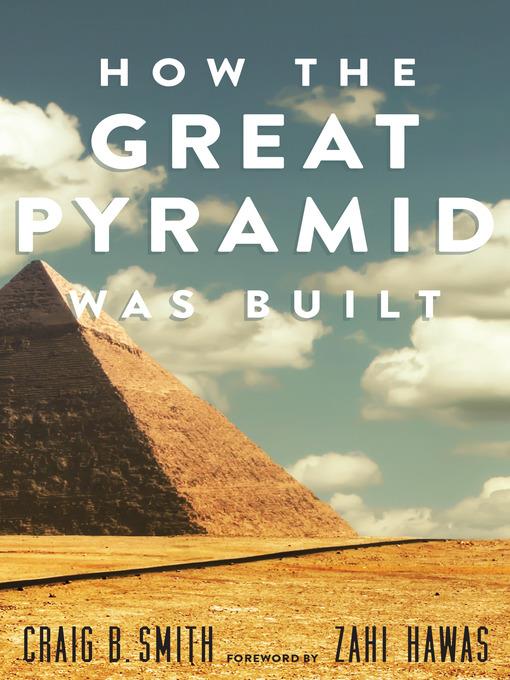
How the Great Pyramid Was Built
کتاب های مرتبط
- اطلاعات
- نقد و بررسی
- دیدگاه کاربران
نقد و بررسی

November 29, 2004
Many questions regarding the Great Pyramid of Giza remain unanswered: How was a structure approximately two-thirds the size of Hoover Dam built by the ancients? How were 2.3 million blocks of limestone and granite weighing several metric tons each lifted into place? How did the ancient Egyptians manage to build such a structure with the tools and human resources at their disposal? In this rather dull book, construction engineer Smith imagines the building of the pyramid as if it were a modern construction project. He lays out the building plans (speculating based on evidence that the Egyptians had plans, scale drawings and models) and the work schedules that Pharaoh Khufu—whose burial tomb the pyramid was—would have needed. Smith examines the evolution of pyramid design to demonstrate that the builders of the Great Pyramid learned to avoid the flaws of earlier models such as the step pyramid. But like others, Smith can only take an educated guess as to how the massive stones were lifted hundreds of meters into place—with ramps. Smith's book is anachronistic in imposing modern standards and methods on an ancient building project, and the history of the Egyptian religion and culture he offers is already well known and better related elsewhere. 32 color, 50 b&w illus.

February 1, 2005
Smith, former president of the engineering firm DMJN-Momes & Narver, uses his expertise as an engineer to offer a plausible answer to the age-old question of just how the Egyptian pyramids, and in particular the Great Pyramid of Khufu, were built. Discoveries during the past two decades at the Fourth Dynasty Giza pyramids and the adjacent workmen's village published by Zahi Hawass and Mark Lehner form the basis of this study. Instead of extraterrestrials or mistreated slaves, the archaeological evidence points to the sophisticated project management of skilled workmen in 2694 B.C.E., having evolved from the experiences of previous generations constructing step and true pyramids of various angles of inclination. After providing a brief overview of Old Kingdom Egypt and the evolution of the pyramid, Smith presents a flow chart to demonstrate the multiplicity of logistical considerations facing the ancient project manager. Additional tables propose time lines for construction, payment estimates for a workforce of 4,656 persons, and a critical path schedule for the construction of Khufu's pyramid. Recommended for all libraries to complement Miroslav Verner's The Pyramids and I.E.S. Edwards's classic The Pyramids of Egypt.-Edward K. Werner, St. Lucie Cty. Lib. Syst., Ft. Pierce, FL
Copyright 2005 Library Journal, LLC Used with permission.

December 1, 2004
Although how the Egyptian pyramids were constructed is unknown, there are technological and physical constraints that allow engineers to imagine how it was done (without invoking helpful aliens). First, throw out the wheel and the pulley, for the ancient Egyptians lacked these tools; second, estimate the labor force required; and third, establish a schedule that ensures the pyramid will be ready to receive the pharaonic mummy. Within these parameters, Smith, a public works engineer by profession, produces a fascinating scenario for the erection circa 2550 B.C.E. of the Great Pyramid of Khufu. Smith assumes that a project manager directed affairs; he reasonably speculates that this was Khufu's vizier, Hemiunu. Smith converts material descriptions and mathematical calculations into an almost audible narrative, so that readers hear Hemiunu think aloud as he reflects on the defects of previous pyramids and plans out a monument to impress the gods and astound posterity. This impressive, accessible analysis is an absolute necessity for the basic Egyptology collection.(Reprinted with permission of Booklist, copyright 2004, American Library Association.)

























دیدگاه کاربران